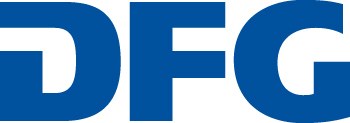#6 Editorial
Welcome to the 6th edition of the e-journal
MAP - Media | Archive | Performance
MAP #6 Recording. Registering
The sixth issue of MAP is dedicated to the topic of recording/registering (Aufzeichnen / Verzeichnen). It takes up considerations already introduced in previous issues and delves into and expands upon them, especially regarding the term and topic of recording (Aufzeichnen), which we examine as a basis for documentation/transcription, archive formation and historiography.
The first part Media and Processes of Recording is dedicated to the activities of writing and drawing, filming and digital visualisation, as well as to their shifting between artistic and scholarly procedures. Central to the ongoing considerations are the respective specific mediality of the procedures and the question of how it enters into the artefacts of archiving. Can the artefacts resulting from such practices be understood as documents, and which assertions do they allow to be made about 'their object?' If it is valid that, aside from its primary occurrence, art based on movement and temporality can only be made accessible through medial transformations, then the possibility of reading such artefacts of transformation as traces of past occurrences presupposes reflecting their technical and operative as well as aesthetic-discursive conditions.
Collecting and Registering as Processes, the second part, is directed at the archive forming process itself, the structures of collecting, the ordering standards of analysis and their investigation by practices of revisiting. The complexity of archiving procedures and representational transformation of performance events emerges from the interconnection of both perspectives and practices. We are concerned with the complementarity of various medial procedures and artefacts which, only through interaction, allow for far-reaching assertions about the recorded event, because, during the recording process, the intrinsic link between description and analysis simultaneously makes dimensions of the event visible that cannot be captured solely through viewing. Recording and registering, according to the proposition of this issue, do not replace the source event, but often first constitute it.
Media and Processes of Recording
At the beginning of this section, Barbara Büscher reflects about the complementarity of techniques of photography/film, techniques of writing and drawing or diagrammatics, and of material relics and their informative qualities in relation to a past performance event.
One of the most ambitious recent projects of digital cataloguing (Verzeichnung) is the online portal Motion Bank. It dates back to an initiative of the Forsythe Company, and over several years of development has designed and implemented a model with which choreographic works are recorded and made available as digital scores. In a conversation, Scott deLahunta and Florian Jenett explain the steps of analysis as well as the technical configurations with which this form of descriptive recording (Aufzeichnung) and of discursive visualisation has arisen.
Jasmin İhraç introduces the self-archiving of an institution in her article. The Barcelona-based Fundació Antoni Tàpies has submitted its exhibition activities to a systematic archival reappraisal, thus giving rise to new contexts and possibilities of updating and questioning exhibition and its perceptual framework.
Starting from questions of transformation, Elisabeth Heymer and Isa Wortelkamp investigate processes of recording (Aufzeichnung) in the literal sense. Graphic artistic practice elucidates processes of movement and generates documents that are as much based on temporality as on clarity of presentation, whilst conversely the practice of writing applied to choreographic artefacts gains documentary value by extending the recording medium beyond its boundaries and artistic perspective.
The question concerning the relation between performance and recording — always a question concerning the temporal relation of before and after — underlies the initiative of the Tokyo Experimental Performance Archive, which Ulrike Krautheim examines. Prompted by the discovery of historical film documents about performances, Yasuo Ozawa develops a method by means of which the performance functions as an act of documentation, whose result, the record, re--presents not only current ambitions, but also primarily the past.
Collecting and Registering as Processes
In terms of the profession as an archivist, Laurent Sebillotte explains the methodological handling of documents and didascaliae which are necessary in their cataloguing and must be taken into account in order to provide a quasi-autonomous structure of availability in contrast to the sheer temporality of the performance event.
The article by Sabine Brantl also considers the question of how historical archive material can be sensibly organised and processed within the institutional framework of a place devoted to the organisation of contemporary exhibitions. The particular history of the Haus der Kunst in Munich, with which the article is concerned, emphasizes the relevance of historical informedness for current presentation.
The internet offers completely new methods of collecting, organising and cataloguing. On the basis of transhistorical or methodologically undisciplined instruments of digital culture, there can arise subjective as well as temporally or spatially unbound corpora whose epistemological value manifests itself independently of scholarly methodology or the disciplinary canon, as Susanne Holschbach demonstrates. Stefanie Schulte Strathaus explains in an interview how such a simultaneity of the apparently unconnected in the framework of an active collecting policy directed not at static preservation, but rather at dynamic contextualisation, can even yield politically relevant results.
Finally, using examples of performance-oriented exhibitions and the temporal concepts underlying them, the article by Franz Anton Cramer investigates emerging notions of the Work which originate in archiving as a sort of dialogue of temporal structures.
In addition, we present three artistic positions dedicated to the topics of drawing/recording (Zeichnen / Aufzeichnen) (Patrick Bossatti, Kathleen Heil), and collecting/organising (Sammeln / Ordnen) combined with presentation of historical processes of action art (Barbora Klímová).
The editors thank all authors for their generous cooperation. Comments and suggestions are always welcome.
Barbara Büscher, Franz Anton Cramer
July 2015
Translation: Jeffrey Linville

We thank the Deutsche Forschungsgemeinschaft (German Research Foundation, DFG) for support in the publication of this issue.
If you would like to receive regular updates on our work, please send us a short eMail under the ref “Newsletter” to >>
mail(at)perfomap.de
